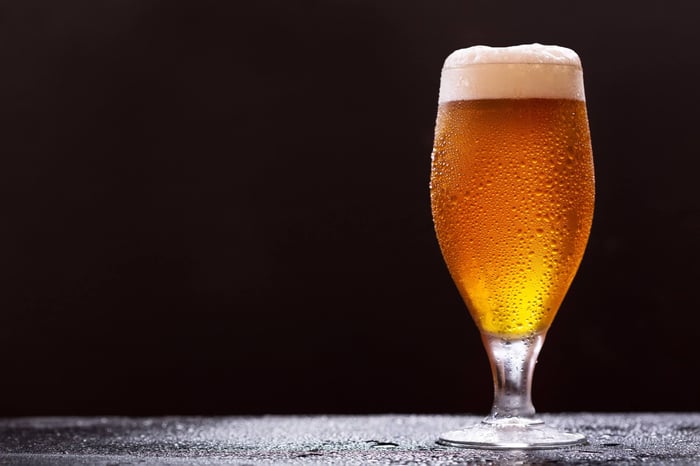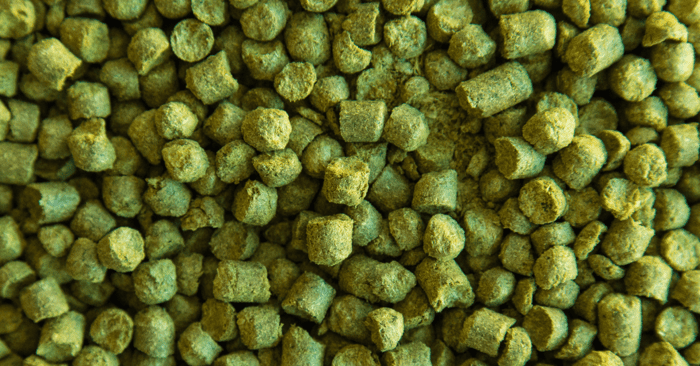Let's be honest – lagers have copped a fair bit of flak over the years. They've been tagged as boring, one-dimensional, and frankly, a bit ordinary. But here's the thing we've discovered through years of brewing: that apparent simplicity is actually their greatest asset. When you strip away all the complex esters and phenols that characterise ale fermentation, you create the perfect stage for showcasing individual ingredients.
Think of it this way: ales are like a bustling Melbourne laneway full of street art, cafes, and noise – there's heaps going on, but sometimes you can't pick out the details. Lagers are like standing on a pristine beach at sunrise – every element is crystal clear, and you can appreciate the subtle beauty of each component.
The Science Behind Clean Brewing
Understanding Lager Fermentation Lager yeasts (Saccharomyces pastorianus) are bottom-fermenting organisms that work their magic at temperatures between 7-13°C, followed by extended conditioning at near-freezing temperatures. This cold process slows down yeast metabolism, dramatically reducing ester production whilst giving the yeast plenty of time to process harsh compounds during extended fermentation periods.
The Australian Advantage Our climate might be famous for heat, but we've got brilliant cool seasons perfect for lager brewing. Plus, Australia produces some exceptional brewing ingredients – Galaxy hops, premium barley, unique honeys – that shine when given a clean fermentation backdrop.
Light Lagers: Summer Session Perfection
Target Profile: Under 4.5% ABV, built for Australian conditions
Picture this: you've just finished a day's work in the summer heat, and you need something cold, crisp, and refreshing. Light lagers might seem like the vanilla ice cream of beer, but that's exactly why they're perfect for subtle innovation.
Building Your Base
- Foundation: 65-75% Australian pilsner malt for clean character
- Adjunct strategy: Rice or corn (up to 40%) creates that signature lightness
- Texture enhancers: Small amounts of wheat malt (5-10%) for improved mouthfeel
Australian Hop Character Forget about hop bombs – in light lagers, hops should enhance drinkability rather than dominate. Try small amounts of Australian varieties:
- Galaxy: Tiny additions for subtle tropical fruit undertones
- Enigma: Gentle stone fruit complexity
- Ella: Clean citrus and floral notes
Keep IBUs modest (8-12) but ensure sufficient bitterness to provide structure and encourage another sip.
Honey Integration Australian honeys offer unique opportunities. Leatherwood honey (2-3% of fermentables) adds distinctive floral complexity, whilst yellow box honey provides gentle sweetness that complements rather than competes with malt character.
Yeast Experimentation: Try split batches with different lager strains. SafLager W-34/70 versus S-23 can produce surprisingly different characters from identical grain bills – perfect for understanding yeast contribution.
Pale Lagers: The Versatile Middle Ground
ABV Range: 4.5-6.0% – perfect for Australian year-round drinking
These styles give you room to play whilst maintaining that clean lager character. Think of them as the Swiss Army knife of beer styles – versatile, reliable, and ready for experimentation.
Advanced Grain Bills Build complexity through intelligent malt selection:
- Base: 80-85% premium pilsner malt
- Character additions: Vienna malt (10-15%) for gentle nuttiness
- Colour and flavour: Small amounts of Munich malt (5-10%) for bread-like complexity
Step Mashing Techniques Traditional step mashing creates complexity that specialty grains can't match. Try:
- Protein rest at 50°C for 20 minutes
- Ramp to 62°C for 30 minutes (beta amylase activity)
- Final rest at 68°C for 30 minutes (alpha amylase activity)
This creates better attenuation, improved head retention, and subtle malt complexity.
Showcasing Australian Hops Single-hop pale lagers are brilliant for understanding individual varieties:
- Vic Secret: Pineapple and passion fruit character
- Topaz: Tropical fruit and floral complexity
- Summer: Clean citrus and herbal notes
Process Innovation: Try a single decoction – pull 30% of the mash, boil for 15 minutes, then return to the main mash. The Maillard reactions create beautiful complexity impossible to achieve through grain additions alone.
Dark Lagers: Cool Season Complexity
Perfect for Melbourne winters and Tasmanian autumns
Dark lagers coincide beautifully with Australia's cooler months, making them ideal for showcasing seasonal ingredients whilst maintaining approachable character.
Sophisticated Malt Layering
- Munich base: 30-50% for rich, honeyed character
- Crystal additions: Australian crystal malts (5-15%) for toffee and caramel complexity
- Roasted elements: Chocolate malt or coffee malt for colour and subtle roasted notes
- Texture enhancers: Small amounts of oats or wheat for improved mouthfeel
Australian Seasonal Ingredients
- Wattleseed: Traditional indigenous ingredient for nutty, coffee-like complexity
- Davidson plum: Tart fruit character during secondary fermentation
- Australian native pepperberry: Subtle spice complexity
Regional Honey Variations Different regions produce distinctive honeys:
- Tasmanian leatherwood: Complex floral and herbal notes
- Queensland macadamia: Rich, nutty character
- Western Australian jarrah: Deep, complex sweetness
Smoking Experiments Australian hardwoods provide unique smoking opportunities. Try small amounts (5-10%) of ironbark or red gum-smoked malt for distinctive local character. The clean lager fermentation won't compete with smoke flavours.
Advanced Technique: Adding fruit or spices during secondary fermentation preserves delicate flavours whilst avoiding fermentation complications.
High-Alcohol Lagers: Premium Innovation
6%+ ABV – where craftsmanship meets creativity
Strong lagers provide the backbone necessary for serious experimentation whilst maintaining lager cleanliness and sessionability.
Bock-Style Evolution Traditional bocks rely on Munich malt character and extended conditioning. Australian interpretations might include:
- Extended lagering: Start at 2°C for three weeks, then drop to 0°C for extended conditioning
- Local malt character: Different Australian malt suppliers provide unique flavour profiles
- Hop integration: Small amounts of Galaxy or Enigma for subtle fruit complexity
India Pale Lager Innovation IPLs showcase Australian hops brilliantly. The clean lager fermentation lets hop character shine without yeast interference:
- Base recipe: 85% pilsner malt with light crystal additions
- Hop combinations: Galaxy + Vic Secret for tropical complexity, or Enigma + Ella for stone fruit character
- Technique: Late additions and dry-hopping work perfectly with lager's transparent backdrop
Barrel Ageing Opportunities Australia's growing spirits industry provides unique barrel opportunities:
- Starward whisky barrels: Complex malt and spirit character
- Gin barrels: Botanical complexity from local distilleries
- Wine barrels: Shiraz or Chardonnay barrels for subtle fruit and oak integration
Indigenous Ingredient Integration Consider unique Australian native ingredients:
- Finger lime: Citrus complexity during conditioning
- Lemon myrtle: Aromatic herb for unique character
- Bunya nut: Roasted and added for nutty complexity
Your Innovation Framework
Master the fundamentals first. Understanding classic styles provides the foundation for successful innovation. You need to know what's "right" before you can make meaningful improvements.
Work with Australian seasons. Our climate actually suits lager brewing perfectly during cooler months. Use natural temperature variations to your advantage, and plan your brewing calendar around seasonal ingredient availability.
Document everything religiously. Australian innovation requires meticulous record-keeping. That subtle improvement you notice might become your signature technique, but only if you can reproduce it consistently.
Source premium local ingredients. Australia produces world-class brewing materials. Use them strategically to create distinctly Australian lagers that showcase our unique terroir.
Start conservatively, then push boundaries. Make single changes to proven recipes rather than wholesale innovations. It's slower, but you'll understand what each modification contributes to the final beer.
Ready to revolutionise your lager brewing? Our precision temperature control makes proper lager brewing accessible to Australian home brewers, regardless of climate challenges.
The Grainfather Team









